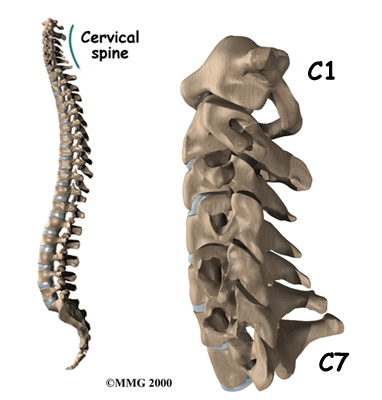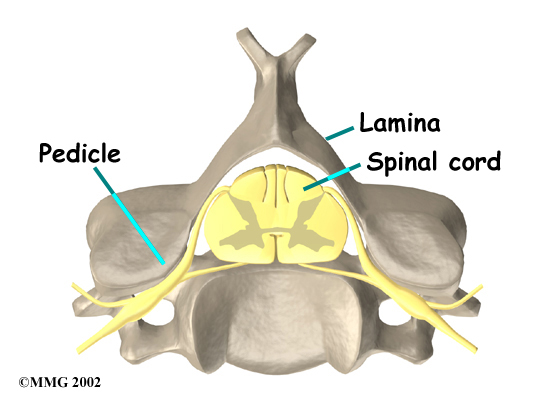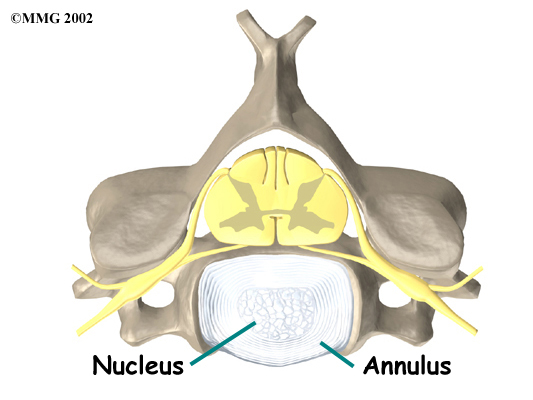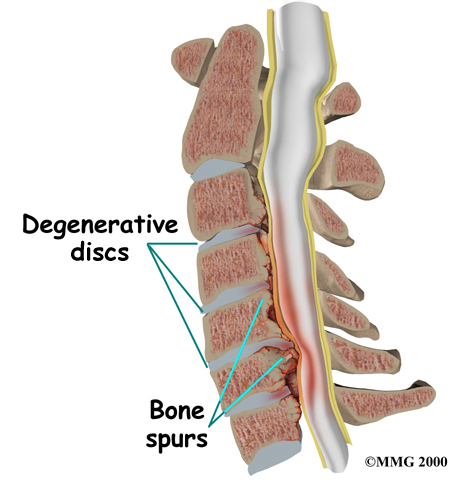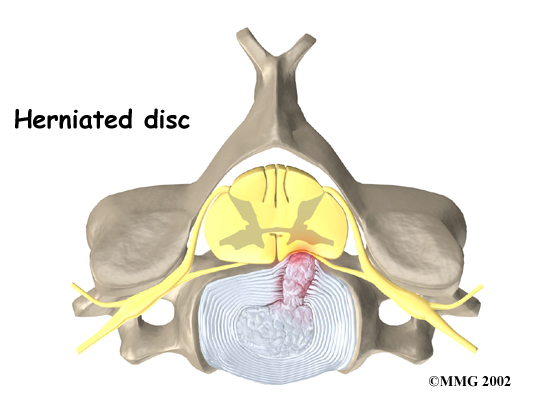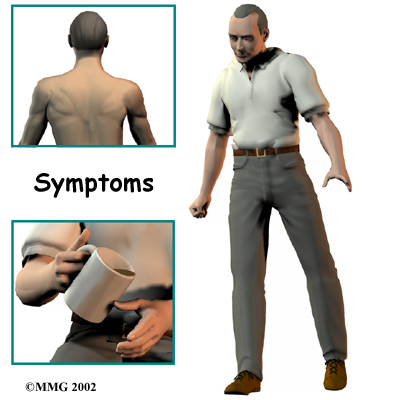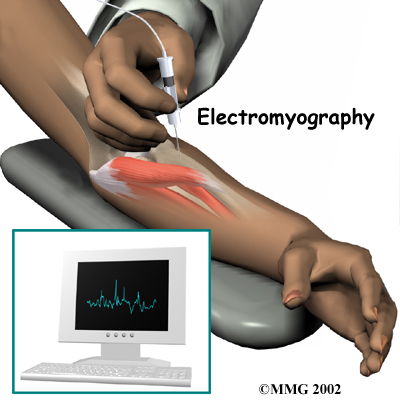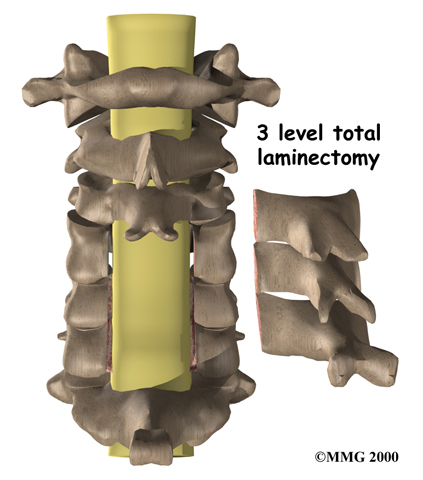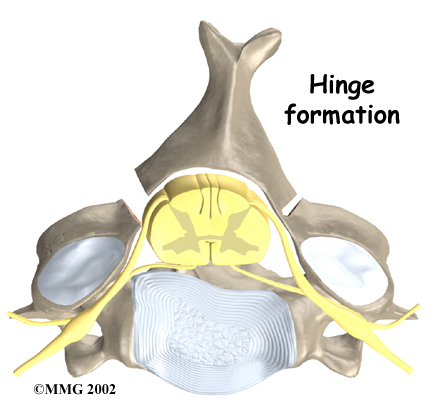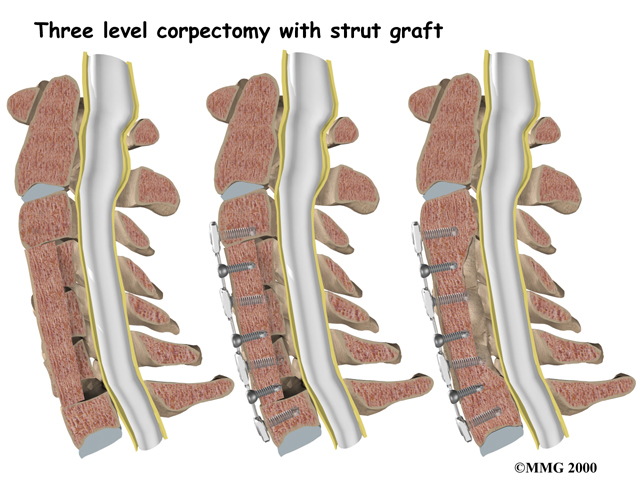What can be done for cervical spinal stenosis?
Nonsurgical Treatment
In acute situations, at first your healthcare professional may suggest immobilizing the neck with a soft neck collar. The collar is a padded ring that wraps around the neck and is held in place by a Velcro strap. Keeping the neck still for a short time can calm inflammation and pain. Patients wear the collar during waking hours for up to three months, and only take it off to shower and engage in rehabilitation. Slowly the time that the collar is worn each day is tapered.
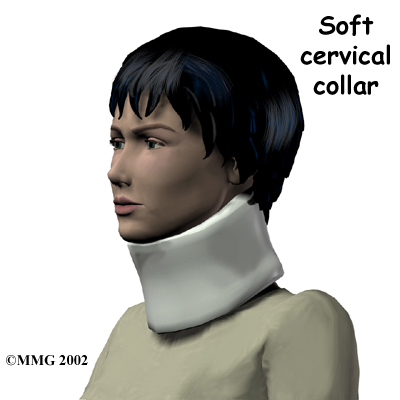
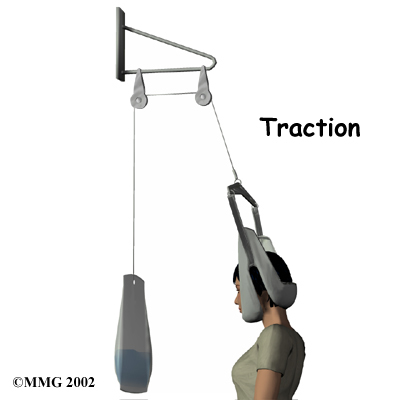
Some patients are given an epidural steroid injection (ESI). The injection is given in a part of the spinal canal called the epidural space. This is the area between the dura (the material that covers the spinal cord) and the spinal column. It is thought that injecting steroid medication into this space fights inflammation around the nerves and discs. This can reduce the swelling and give the spinal cord more room.
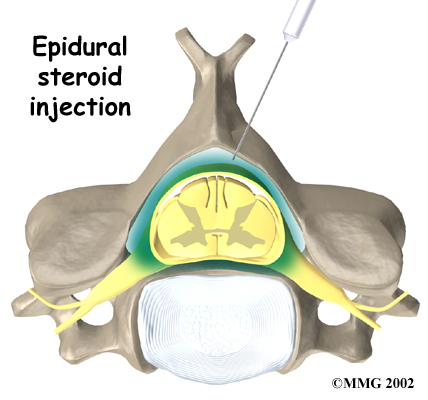
Non-surgical Rehabilitation
Physiotherapy at Momentum Spine & Sport Physiotherapy can be very useful for cervical spinal stenosis if the disease has not progressed too far. Our treatment will focus on relieving your pain and improving your range of motion. Depending on what your exact symptoms are, your rehabilitation will also focus on maintaining or improving the strength and coordination in your hands and legs, as well as potentially assist in decreasing any altered sensations of your skin that you may be feeling.
Your therapist may use a variety of modalities to assist with your symptoms. Many patients find heat applied to the neck is comforting. Ice may also be used, if preferred. In addition, electrical modalities such as ultrasound or interferential current may also be used. Hands-on treatment such as massage, stretches or traction of the neck can also be very useful. Traction is a way to gently stretch the joints and muscles of the neck. It can be done using a machine with a special head halter, or your therapist can apply the traction with their hands. They can also teach you how to perform self-traction while at home, which may also assist with your symptoms.
Your therapist will prescribe a series of range of motion exercises for your neck, and also for related areas such as your shoulders. These exercises may be done under the supervision of your therapist in the clinic but will also be required to be done as part of your home exercise program. Strengthening exercises are also an extremely important part of your rehabilitation if you suffer from cervical spinal stenosis. As explained above, the muscles supplied by nerves that are being affected by the stenosis will become weak. By doing strengthening exercises the muscles have a better chance at maintaining the strength they already have or improving any strength which has been lost.
Coordination exercises may be prescribed in addition to the strength exercises in order to get the muscles of the hands (and feet, if necessary) working well. Proprioception exercises, which assist with the ability to know where your body is in space, will be also be prescribed.
If you have lost any sensation due to your cervical spinal stenosis then your therapist may also prescribe exercises to help maintain or improve your sensation. Even simple hand-rubbing can help to stimulate your sensation if it has been altered.
If necessary, your therapist will encourage gait-retraining exercises. If you are not walking normally due to the effects of the spinal stenosis, your gait will not be as efficient as it should be, and this abnormal pattern can lead to secondary injuries. If necessary, your therapist will prescribe a walking aid such as a cane or stick in order to ensure you are safe and prevent any falls while you are improving your walking pattern.
Maintaining good posture is very important when dealing with cervical spinal stenosis. Your therapist will ensure that you know what the proper posturing position is for when you are sitting, standing, walking or engaging in any other regular activity you do. Due to the already small anatomical area in the neck for the nerves and spinal cord to be contained, poor posturing can make a significant difference to the symptoms you feel. In order to assist your posturing or aid your symptoms, your therapist may use tape near your neck or shoulder areas or in some cases may even suggest the use of a specialized brace that assists with maintaining posture.
Lastly, your therapist will educate you on the importance of restricting any aggravating activities that you engage in during the day. Heavy and repeated motions of the neck, arms, and upper body can be particularly irritating to cervical spinal stenosis. Your therapist can also provide advice on the best sleeping posture to aid your symptoms.
Unfortunately spinal myelopathy caused by cervical spinal stenosis can be a very serious condition. If your condition is causing significant problems or is rapidly getting worse, immediate surgery may be recommended rather than trialling any non-surgical treatments.
Momentum Spine & Sport Physiotherapy provides services for physiotherapy in Edmonton and St Albert.
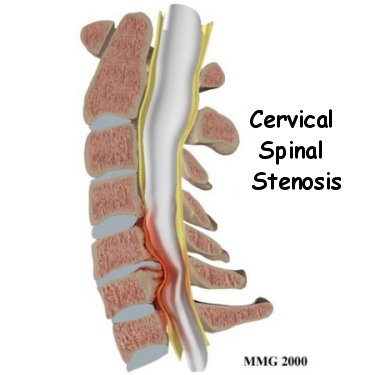 The spinal cord is a column of nerve tissue protected by a bony tube in the spinal column. Conditions that narrow the space in this tube put the spinal cord at risk of getting squeezed. This narrowing is called stenosis. When the narrowing occurs in the spinal column of the neck it is called cervical spinal stenosis, or cervical stenosis. Pressure against the spinal cord as a result of spinal stenosis causes injury to the spinal cord, which is termed myelopathy. Myelopathy is a condition that demands medical attention as it can cause serious problems including problems with the bowels and bladder, changes in the way you walk, and can affect your ability to use your fingers and hands.
The spinal cord is a column of nerve tissue protected by a bony tube in the spinal column. Conditions that narrow the space in this tube put the spinal cord at risk of getting squeezed. This narrowing is called stenosis. When the narrowing occurs in the spinal column of the neck it is called cervical spinal stenosis, or cervical stenosis. Pressure against the spinal cord as a result of spinal stenosis causes injury to the spinal cord, which is termed myelopathy. Myelopathy is a condition that demands medical attention as it can cause serious problems including problems with the bowels and bladder, changes in the way you walk, and can affect your ability to use your fingers and hands.
